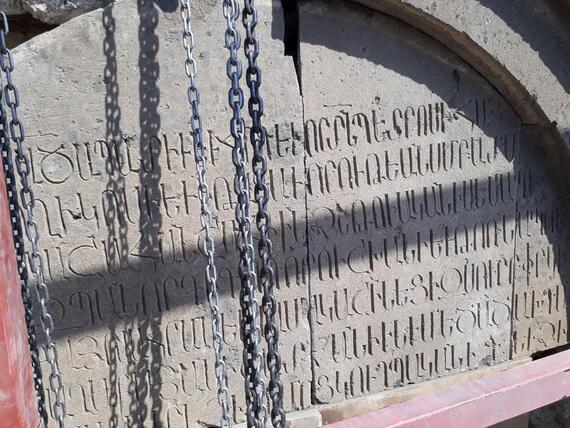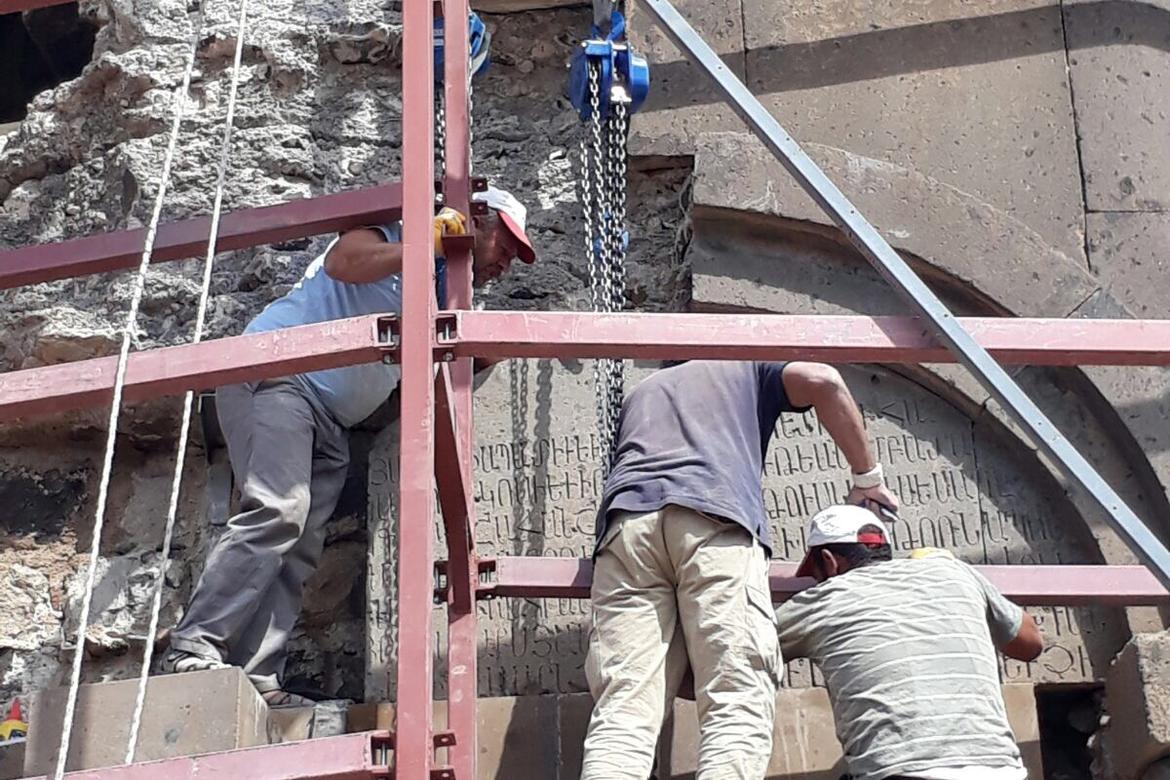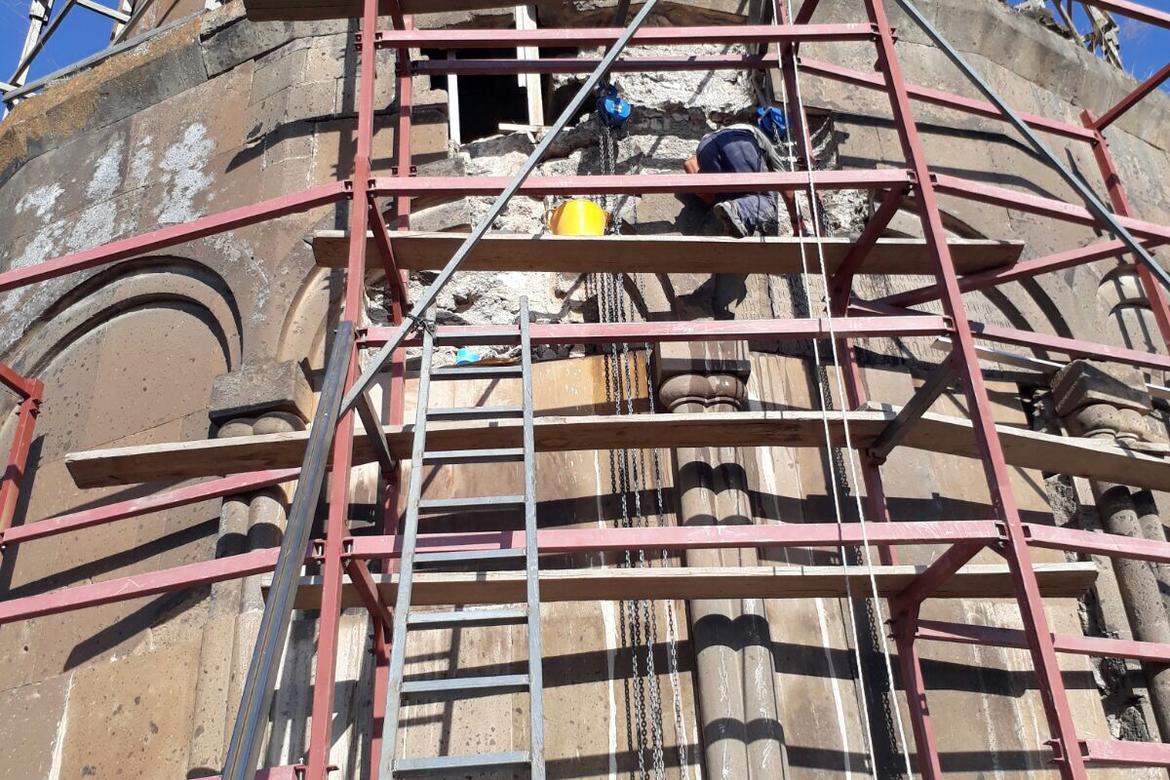Seeing Light Again: Restoring the Foundation Inscription of the Church of the Holy Redeemer

On an afternoon with spacious sunshine in August 2017, the fallen inscription and capitals of the Church of the Holy Redeemer, or Surp Amenap’rkitch, were revived and returned to the top of the thousand-year-old heritage site in Ani, Turkey. It was a significant and touching moment, and I still remember, during a 2015 mission trip, Armenian art historian Christina Maranci pointing out to the group that the inscription had fallen to the ground.
Located in the heart of the Archaeological Site of Ani, known as the city of 1,001 churches, the Church of the Holy Redeemer was built to house a piece of the True Cross in 1036. After being struck by lightning in 1930, the cylindrical church surmounted by a circular dome has been in ruins, with its western half barely standing. On the top of the vulnerable exterior wall, the inscription of the foundation was broken into three pieces – a small part of the right was kept in place, the middle fell in 2013, and the left was abandoned on the ground for decades.
As one of the few historic structures still standing at Ani, the church was facing critical threats from neglect and serious deterioration. Word Monuments Fund began field missions in 1996, placed it and other monuments in Ani on the 1998, 2000, and 2002 Watch lists, and collaborated a conservation project with the Turkish Ministry of Culture and Tourism in 2009.
In the summer of 2015, WMF organized an international team of experts, including art historians from the United States, a historian of architecture from Russia, an archaeologist from Macedonia, a masonry craftsman from Armenia, and architects and engineers from Turkey to visit the site.
During the mission, the multidisciplinary team investigated the monument and set up conservation tasks, such as emergency stabilization, materials studies, structural monitoring, wall painting conservation, and archaeological work.
On a sunny afternoon during the trip, art historian Christina Maranci discovered inscribed words on a huge fallen stone covered by weeds and rubble. She showed the group the findings and translated the ancient Armenian scripts word by word:
“In the years of Petros, honored by God and spiritual lord, kat’oghikos of the Armenians, and during the reign of Smbat, son of Gagik shahanshah, in the year 485 [1036 A.D.], I, Ablgharib marzipan, son of Grigor ishkhan and grandson of Abughamr and brother of Vahram and of Vasak, built this St. P’rkich in the metropolis Ani …”
This inscription makes me think of the discovery story of the archaeological site. The world was reintroduced to Ani during the visit of English traveler Robert Ker Porter in 1817, after sitting abandoned for several hundred years. Two hundred years later, in 2016, the Archaeological Site of Ani was added to the World Heritage list.
The foundation inscription being put into place at the church is not only a significant milestone for the conservation project, but an incredible gift to the people who have supported and fallen in love with this amazing monument over the past two centuries. It deeply inspires our works ahead!


